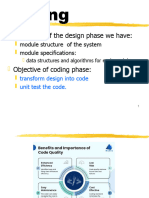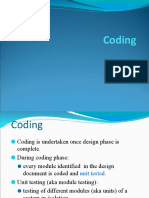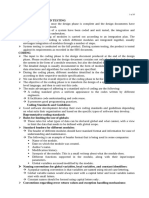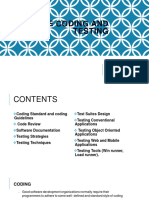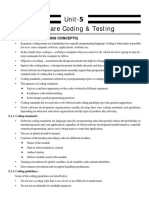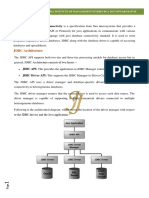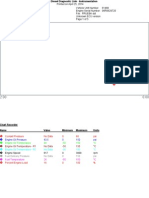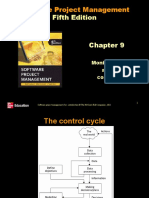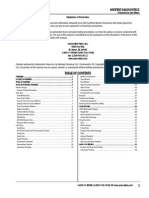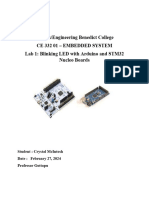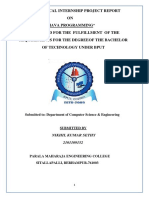0% found this document useful (0 votes)
269 views48 pagesStructured Coding Techniques
Structured coding techniques involve following coding standards and guidelines to produce well-structured code. Coding standards define conventions for naming variables, formatting code, and other elements to promote code consistency and understandability. They also cover error handling conventions. Coding guidelines provide general recommendations for readability, such as limiting variable scope and function length. Code reviews through inspection and walkthroughs help enforce standards and find errors before testing.
Uploaded by
SreejithCopyright
© © All Rights Reserved
We take content rights seriously. If you suspect this is your content, claim it here.
Available Formats
Download as PDF, TXT or read online on Scribd
0% found this document useful (0 votes)
269 views48 pagesStructured Coding Techniques
Structured coding techniques involve following coding standards and guidelines to produce well-structured code. Coding standards define conventions for naming variables, formatting code, and other elements to promote code consistency and understandability. They also cover error handling conventions. Coding guidelines provide general recommendations for readability, such as limiting variable scope and function length. Code reviews through inspection and walkthroughs help enforce standards and find errors before testing.
Uploaded by
SreejithCopyright
© © All Rights Reserved
We take content rights seriously. If you suspect this is your content, claim it here.
Available Formats
Download as PDF, TXT or read online on Scribd
/ 48




